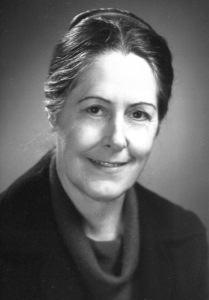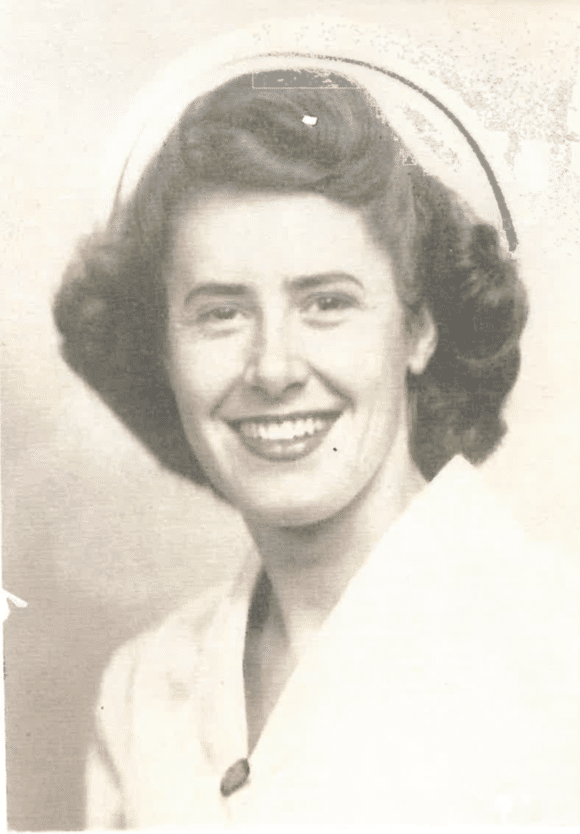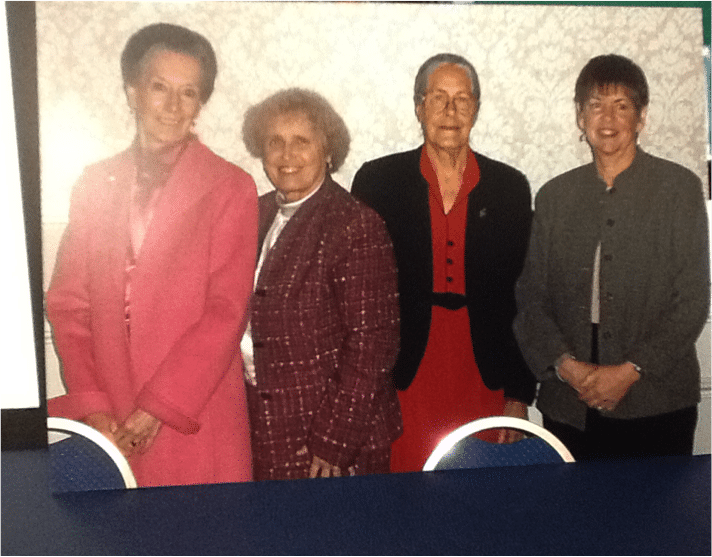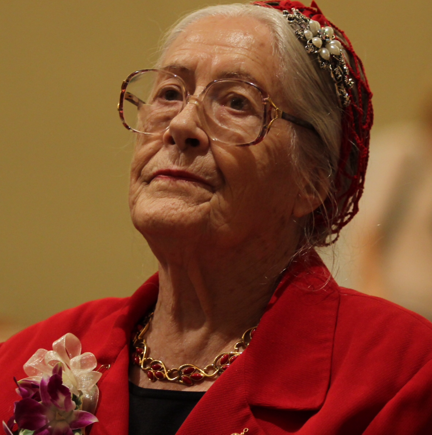Betty Neuman (1924 – present) is a nursing theorist who developed the Neuman Systems Model. She gave many years perfecting a systems model that views patients holistically. She inquired about theories from several theorists and philosophers and applied her knowledge in clinical and teaching expertise to develop the Neuman Systems Model that has been accepted, adopted, and applied as a core for nursing curriculum in many areas worldwide.
Table of Contents
- Biography of Betty Neuman
- Betty Neuman’s Nursing Theory
- Recommended Resources
- See Also
- References
- External Links
Biography of Betty Neuman
Early Life
Betty Neuman was born in 1924 near Lowell, Ohio. She grew up on a farm which later encouraged her to help people who are in need. Her father was a farmer who became sick and died at the age of 36. Her mother was a self-educated midwife that led the young Neuman to be always influenced by the commitment that took her away from home from time to time. She had one older brother and a younger brother, which makes her the middle child among her siblings. Her love for nursing started when she took care of her father, which later created her compassion in her chosen career path.
Education
As a young girl, she attended the same one-room schoolhouse that her parents had attended and were excited to go to a high school library. She was always engaged and fascinated with the study of human behavior. During World War II, she had her first job as an aircraft instrument technician. In 1947, she received her RN Diploma from Peoples Hospital School of Nursing, Akron, Ohio.
Nursing Career of Betty Neuman

Betty Neuman moved to California and worked in various capacities as a hospital nurse and head nurse at Los Angeles County General Hospital, school nurse, industrial nurse, and clinical instructor at the University of Southern California Medical Center, Los Angeles.
In 1957, she received a baccalaureate degree in public health and psychology with honors. Amidst her hectic life as a nurse, she also managed to work as a fashion model and learned to fly a plane. She got married, supported her husband’s medical practice, and had their daughter in 1959.
She also earned a master’s degree in mental health, public health consultation in 1966 from the University of California, Los Angeles (UCLA). After her graduation, she was hired as a department chair in the UCLA School of Nursing graduate program. Neuman developed the first community mental health program for graduate students in the LA area from 1967 to 1973.

In 1985, Betty Neuman concluded a doctoral degree in clinical psychology at Pacific Western University. She was a pioneer of nursing involvement in mental health. She and Donna Aquilina were the first two nurses to develop the nurse counselor role within community crisis centers in Los Angeles.
Neuman persisted in starting a private practice as a marriage and family therapist, specializing in Christian counseling. She is a Fellow of the American Association of Marriage and Family Therapy and the American Academy of Nursing. Until 2009, she was the Neuman Systems Model Trustees Group, Inc. that she established in 1988 and still attends as a consultant. The Trustees Group was created to preserve and maintain the message of her nursing theory for the health care community.
Works of Betty Neuman

In 1970, Betty Neuman designed a nursing conceptual model to expand students’ understanding of client variables beyond the medical model. Her teaching programs at UCLA paved the way for developing her nursing model. During those times, she did not write a book but made her concepts known to Joan Riehl-Sisca and Sr. Callista Roy and incorporated them in their 1971 book, Conceptual Models for Nursing Practice.
In 1972, Neuman published a draft of her model. She developed and improved the concepts and published her book, The Neuman System Model: Application to Nursing Education and Practice, in 1982. She made further revisions in later editions. As a speaker and author, she spent countless hours teaching and explaining the model’s many concepts and aspects to students and professors.

Neuman has also been involved in numerous publications, paper presentations, consultations, lectures, and conferences on applying and using the model. She worked as a consultant nationally and internationally concerning implementing the nursing education programs and clinical practice facilities model.
Awards and Honors of Betty Neuman

Betty Neuman has done many things, including a nurse, educator, health counselor, therapist, author, speaker, and researcher. Throughout the years, she earned many awards and honors, including several honorary doctorates, and was an honorary member of the American Academy of Nursing. The profound effect of her work on the nursing profession is well known throughout the world.
- Honorary Doctorate of Letters, Neumann College, Aston, PA (1992)
- Honorary Member of the Fellowship of the American Academy of Nursing (1993)
- Honorary Doctorate of Science, Grand Valley State University, Michigan (1998)
She was honored by President Richard Jusseaume and Provost Dr. Laurence Bove with the Walsh University Distinguished Service Medal, which is awarded to those who have contributed outstanding professional or voluntary service to others within the national, regional or local community.

In an annual Nursing Research Day sponsored by Walsh’s Phi Eta Chapter of Sigma Theta Tau, Byers School of Nursing Dean Dr. Linda Linc granted Neuman with the first annual Neuman Award, named in her honor, for outstanding service in the nursing profession.
Betty Neuman’s Nursing Theory
Three words frequently used concerning stress are inevitable, painful, and intensifying. It is generally subjective and can be interpreted as the circumstances of conceivably threatening and out of their control. A nursing theory developed by Betty Neuman is based on the person’s relationship to stress, response, and reconstitution factors that are progressive in nature. The Neuman Systems Model presents a broad, holistic, and system-based method to nursing that maintains a factor of flexibility. It focuses on the patient system’s response to actual or potential environmental stressors and maintains the client system’s stability through primary, secondary, and tertiary nursing prevention interventions to reduce stressors.
What is the Neuman Systems Model?
Betty Neuman describes the Neuman Systems Model as “a unique, open-system-based perspective that provides a unifying focus for approaching a wide range of concerns. A system acts as a boundary for a single client, a group, or even several groups; it can also be defined as a social issue. A client system in interaction with the environment delineates the domain of nursing concerns.”
The Neuman Systems Model views the client as an open system that responds to stressors in the environment. The client variables are physiological, psychological, sociocultural, developmental, and spiritual. The client system consists of a basic or core structure that is protected by lines of resistance. The usual health level is identified as the normal defense line protected by a flexible line of defense. Stressors are intra-, inter-, and extra personal in nature and arise from the internal, external, and created environments. When stressors break through the flexible line of defense, the system is invaded, and the lines of resistance are activated. The system is described as moving into illness on a wellness-illness continuum. If adequate energy is available, the system will be reconstituted with the normal defense line restored at, below, or above its previous level.
Nursing interventions occur through three prevention modalities. Primary prevention occurs before the stressor invades the system; secondary prevention occurs after the system has reacted to an invading stressor; tertiary prevention occurs after secondary prevention as reconstitution is being established.
Assumptions
The following are the assumptions or “accepted truths” made by Neuman’s Systems Model:
- Each client system is unique, a composite of factors and characteristics within a given range of responses.
- Many known, unknown, and universal stressors exist. Each differs in its potential for disturbing a client’s usual stability level or normal line of defense. The particular interrelationships of client variables at any point in time can affect the degree to which a client is protected by the flexible line of defense against possible reaction to stressors.
- Each client/client system has evolved a normal range of responses to the environment referred to as a normal line of defense. The normal line of defense can be used as a standard from which to measure health deviation.
- When the flexible line of defense is no longer capable of protecting the client/client system against an environmental stressor, the stressor breaks through the normal line of defense.
- Whether in a state of wellness or illness, the client is a dynamic composite of the variables’ interrelationships. Wellness is on a continuum of available energy to support the system in an optimal system stability state.
- Implicit within each client system is internal resistance factors known as lines of resistance, which function to stabilize and realign the client to the usual wellness state.
- Primary prevention relates to general knowledge applied in client assessment and intervention in identifying and reducing or mitigating possible or actual risk factors associated with environmental stressors to prevent a possible reaction.
- Secondary prevention relates to symptomatology following a reaction to stressors, an appropriate ranking of intervention priorities, and treatment to reduce their noxious effects.
- Tertiary prevention relates to the adjustive processes as reconstitution begins and maintenance factors move the client back in a circular manner toward primary prevention.
- The client as a system is in dynamic, constant energy exchange with the environment. (Neuman, 1995)
Major Concepts of Neuman Systems Model
This section will define the nursing metaparadigm and the major concepts in Betty Neuman’s Neuman Systems Model.
Human being
The human being is an open system that interacts with internal and external environment forces or stressors. The human is constantly changing, moving toward a dynamic state of system stability or illness of varying degrees.
Environment
The environment is a vital arena that is germane to the system and its function. The environment may be viewed as all factors that affect and are affected by the system. In Neuman Systems Model identifies three relevant environments: (1) internal, (2) external, and (3) created.
- The internal environment exists within the client system. All forces and interactive influences that are solely within the client system’s boundaries make up this environment.
- The external environment exists outside the client system.
- The created environment is unconsciously developed and is used by the client to support protective coping.
Health
In Neuman’s nursing theory, Health is defined as the condition or degree of system stability and is viewed as a continuum from wellness to illness. When system needs are met, optimal wellness exists. When needs are not satisfied, illness exists. When the energy needed to support life is not available, death occurs.
Nursing
Nursing’s primary concern is to define the appropriate action in situations that are stress-related or concerning possible reactions of the client or client system to stressors. Nursing interventions aim to help the system adapt or adjust and retain, restore, or maintain some degree of stability between the client system variables and environmental stressors, focusing on conserving energy.
Open System
A system in which there is a continuous flow of input and process, output and feedback. It is a system of organized complexity, where all elements are in interaction.
Basic Stricture and Energy Resources
The basic structure, or central core, comprises those basic survival factors common to the species. These factors include the system variables, genetic features, and strengths and weaknesses of the system parts.
Client Variables
Neuman views the individual client holistically and considers the variables simultaneously and comprehensively.
- The physiological variable refers to the structure and functions of the body.
- The psychological variable refers to mental processes and relationships.
- The sociocultural variable refers to system functions that relate to social and cultural expectations and activities.
- The developmental variable refers to those processes related to development over the lifespan.
- The spiritual variable refers to the influence of spiritual beliefs.
Flexible line of defense
A protective accordion-like mechanism that surrounds and protects the normal line of defense from invasion by stressors.
Normal line of defense
An adaptational level of health developed over time and is considered normal for a particular individual client or system; it becomes a standard for wellness-deviance determination.
Lines of resistance
Protection factors are activated when stressors have penetrated the normal line of defense, causing reaction symptomatology.
Subconcepts of Neuman Systems Model
Stressors
A stressor is any phenomenon that might penetrate both the flexible and normal lines of defense, resulting in either a positive or negative outcome.
- Intrapersonal stressors are those that occur within the client system boundary and correlate with the internal environment.
- Interpersonal stressors occur outside the client system boundary, are proximal to the system, and impact the system.
- Extrapersonal stressors also occur outside the client system boundaries but are at a greater distance from the system than are interpersonal stressors. An example is a social policy.
Stability
A state of balance or harmony requiring energy exchanges as the client adequately copes with stressors to retain, attain, or maintain an optimal health level, thus preserving system integrity.
Degree of Reaction
The amount of system instability resulting from stressor invasion of the normal line of defense.
Entropy
A process of energy depletion and disorganization moving the system toward illness or possible death.
Negentropy
An energy conservation process that increases organization and complexity, moving the system toward stability or a higher degree of wellness.
Input/Output
The matter, energy, and information exchanged between the client and environment entering or leaving the system at any point in time.
Reconstitution
Following treatment of stressor reaction, the return and maintenance of system stability may result in a higher or lower wellness level.
Prevention as Intervention
Intervention modes for nursing action and determinants for both client and nurse entry into the health care system.
- Primary prevention occurs before the system reacts to a stressor; it includes health promotion and wellness maintenance. Primary prevention focuses on strengthening the flexible line of defense through preventing stress and reducing risk factors. This intervention occurs when the risk or hazard is identified but before a reaction occurs. Strategies that might be used include immunization, health education, exercise, and lifestyle changes.
- Secondary prevention occurs after the system reacts to a stressor and is provided in terms of existing symptoms. Secondary prevention focuses on strengthening the internal lines of resistance and, thus, protects the basic structure through appropriate treatment of symptoms. The intent is to regain optimal system stability and conserve energy in doing so. If secondary prevention is unsuccessful and reconstitution does not occur, the basic structure will be unable to support the system and its interventions, and death will occur.
- Tertiary prevention occurs after the system has been treated through secondary prevention strategies. Its purpose is to maintain wellness or protect the client system reconstitution by supporting existing strengths and preserving energy. Tertiary prevention may begin at any point after system stability has begun reestablished (reconstitution has begun). Tertiary prevention tends to lead back to primary prevention. (Neuman, 1995)
Strengths and Weaknesses
Betty Neuman reports her nursing model was designed for nursing but can be used by other health disciplines, which have pros and cons. As a strength, if multiple health disciplines use Neuman’s System Model, a consistent approach to client care would be facilitated. As a con, if the model is useful to various disciplines, it is not specific to nursing. It thus may not differentiate the practice of nursing from that of other disciplines.
Strengths
- The Neuman Systems Model’s major strength is its flexibility for use in all areas of nursing – administration, education, and practice.
- Neuman has presented a view of the client equally applicable to an individual, a family, a group, a community, or any other aggregate.
- The Neuman Systems Model, particularly presented in the model diagram, is logically consistent.
- The emphasis on primary prevention, including health promotion, is specific to this model.
- Once understood, the Neuman Systems Model is relatively simple and has readily acceptable definitions of its components.
Weaknesses
- The major weakness of the model is the need for further clarification of the terms used.
- Interpersonal and extrapersonal stressors need to be more clearly differentiated.
Analysis
The delineation of Neuman’s three defense lines was not clearly explained. In reality, the individual resists stressors with internal and external reflexes, which were made complicated by the formulation of different resistance levels in Neuman’s open systems model.
Neuman made mention of energy sources in her model as part of the basic structure. It can be more of help when Neuman has enumerated all the energy sources that she is about. With such, new nursing interventions regarding the provision of the client’s needed energy can be conceptualized.
The holistic and comprehensive view of the client system is associated with an open system. Health and illness are presented on a continuum with the movement toward health described as negentropic and toward illness as entropic. Her use of entropy is inconsistent with the characteristics of entropy that is closed rather than an open system.
Recommended Resources
Recommended books and resources to learn more about nursing theory:
Disclosure: Included below are affiliate links from Amazon at no additional cost from you. We may earn a small commission from your purchase. For more information, check out our privacy policy.
- Nursing Theorists and Their Work (10th Edition) by Alligood
Nursing Theorists and Their Work, 10th Edition provides a clear, in-depth look at nursing theories of historical and international significance. Each chapter presents a key nursing theory or philosophy, showing how systematic theoretical evidence can enhance decision making, professionalism, and quality of care. - Knowledge Development in Nursing: Theory and Process (11th Edition)
Use the five patterns of knowing to help you develop sound clinical judgment. This edition reflects the latest thinking in nursing knowledge development and adds emphasis to real-world application. The content in this edition aligns with the new 2021 AACN Essentials for Nursing Education. - Nursing Knowledge and Theory Innovation, Second Edition: Advancing the Science of Practice (2nd Edition)
This text for graduate-level nursing students focuses on the science and philosophy of nursing knowledge development. It is distinguished by its focus on practical applications of theory for scholarly, evidence-based approaches. The second edition features important updates and a reorganization of information to better highlight the roles of theory and major philosophical perspectives. - Nursing Theories and Nursing Practice (5th Edition)
The only nursing research and theory book with primary works by the original theorists. Explore the historical and contemporary theories that are the foundation of nursing practice today. The 5th Edition, continues to meet the needs of today’s students with an expanded focus on the middle range theories and practice models. - Strategies for Theory Construction in Nursing (6th Edition)
The clearest, most useful introduction to theory development methods. Reflecting vast changes in nursing practice, it covers advances both in theory development and in strategies for concept, statement, and theory development. It also builds further connections between nursing theory and evidence-based practice. - Middle Range Theory for Nursing (4th Edition)
This nursing book’s ability to break down complex ideas is part of what made this book a three-time recipient of the AJN Book of the Year award. This edition includes five completely new chapters of content essential for nursing books. New exemplars linking middle range theory to advanced nursing practice make it even more useful and expand the content to make it better. - Nursing Research: Methods and Critical Appraisal for Evidence-Based Practice
This book offers balanced coverage of both qualitative and quantitative research methodologies. This edition features new content on trending topics, including the Next-Generation NCLEX® Exam (NGN). - Nursing Research (11th Edition)
AJN award-winning authors Denise Polit and Cheryl Beck detail the latest methodologic innovations in nursing, medicine, and the social sciences. The updated 11th Edition adds two new chapters designed to help students ensure the accuracy and effectiveness of research methods. Extensively revised content throughout strengthens students’ ability to locate and rank clinical evidence.
See Also
Recommended site resources related to nursing theory:
- Nursing Theories and Theorists: The Definitive Guide for Nurses MUST READ!
In this guide for nursing theories, we aim to help you understand what comprises a nursing theory and its importance, purpose, history, types or classifications, and give you an overview through summaries of selected nursing theories.
Other resources related to nursing theory:
- Betty Neuman: Neuman Systems Model
- Dorothea Orem: Self-Care Deficit Theory
- Dorothy Johnson: Behavioral System Model
- Faye Abdellah: 21 Nursing Problems Theory
- Florence Nightingale: Environmental Theory
- Hildegard Peplau: Interpersonal Relations Theory
- Ida Jean Orlando: Deliberative Nursing Process Theory
- Imogene King: Theory of Goal Attainment
- Jean Watson: Theory of Human Caring
- Lydia Hall: Care, Cure, Core Nursing Theory
- Madeleine Leininger: Transcultural Nursing Theory
- Martha Rogers: Science of Unitary Human Beings
- Myra Estrin Levine: The Conservation Model of Nursing
- Nola Pender: Health Promotion Model
- Sister Callista Roy: Adaptation Model of Nursing
- Virginia Henderson: Nursing Need Theory
References
Recommended resources and references for this nursing theories guide.
- Alligood, M. R. (2013). Nursing Theory-E-Book: Utilization & Application. Elsevier Health Sciences.
- Neuman, B. (1996). The Neuman systems model in research and practice. Nursing Science Quarterly, 9(2), 67-70. [Link]
- Neuman, B. (1995). The Neuman systems model (3rd ed.). In McEwen, M. and Wills, E. (Ed.). Theoretical basis for nursing. USA: Lippincott Williams & Wilkins.
External Links
- NeumanSystemsMode.org. Official webpage of Betty Neuman.
Biography was written by Wayne, G.

Thank you.
WOW, good for you, you are an inspiration.
Do you have a specific source and citation for the analysis points? I would love to use parts for an academic paper.
Is she still alive?
A closed system is a system that does not interact in any way with its surroundings. In reality, there are no closed systems except, perhaps, the universe as a whole.
Entropyhttp://labman.phys.utk.edu › modules › entropy
Your theory is not only for one profession. Its a widespread profession. Thanks Betty, Keep living
I TOTALLY AGREE WITH YOU